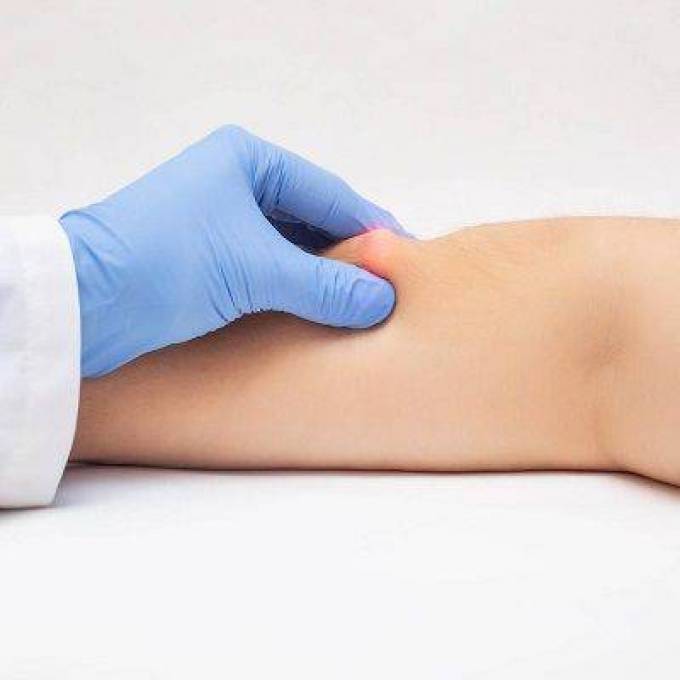Lipoma Treatment: Empower Yourself with Knowledge
Published By Bisma Jamal, 23 Sep 2024

Lipomas, benign tumors composed of fat cells, are generally harmless but can lead to discomfort and self-consciousness for many individuals. Understanding lipomas and their treatment options is crucial for making informed decisions about your health. This article aims to empower you with knowledge about Lipoma Treatment in Dubai, enabling you to take control of your care.
What Are Lipomas?
Lipomas are soft, movable lumps that typically form just beneath the skin. They are most commonly found on the arms, back, shoulders, and thighs but can appear anywhere on the body. While lipomas are usually painless, their growth can sometimes lead to physical discomfort or aesthetic concerns, prompting individuals to seek treatment.
Common Characteristics of Lipomas:
- Soft and Painless: Lipomas are usually soft to the touch and do not cause pain.
- Slow Growth: They typically develop slowly over time.
- Movable: Lipomas can often be moved slightly under the skin when palpated.
Why Consider Treatment?
While lipomas are generally not harmful, several factors may lead individuals to consider treatment:
- Discomfort: Larger lipomas can press against nerves or surrounding tissues, causing discomfort.
- Aesthetic Concerns: Visible lipomas may lead to self-consciousness, prompting individuals to seek removal.
- Monitoring Growth: Some lipomas can grow over time, necessitating evaluation and potential treatment.
Treatment Options
1. Surgical Excision
Surgical excision is the most common and effective method for treating lipomas. This procedure involves removing the entire lipoma along with its capsule.
Benefits:
- Complete Removal: Ensures the lipoma is entirely excised, minimizing the risk of recurrence.
- Rapid Relief: Provides immediate relief from discomfort once removed.
Considerations:
- Recovery time can vary, but most patients can resume normal activities within a few days.
2. Liposuction
Liposuction offers a less invasive option for lipoma removal. It involves using a thin tube to suction out the fatty tissue.
Benefits:
- Minimal Scarring: Smaller incisions lead to reduced visibility of scars.
- Faster Recovery: Generally quicker recovery compared to surgical excision.
Considerations:
- Liposuction may not completely remove the lipoma’s capsule, potentially leading to recurrence.
3. Corticosteroid Injections
Corticosteroid injections can help shrink the size of lipomas without surgical intervention. This option is often preferred by individuals looking for non-invasive treatment.
Benefits:
- Non-Surgical: Avoids the risks associated with surgery.
- Size Reduction: Can lead to noticeable decreases in lipoma size.
Considerations:
- Multiple injections may be necessary, and results can vary.
Making an Informed Decision
Consultation with a Healthcare Professional
Your first step should be to consult with a qualified healthcare provider, such as a dermatologist or surgeon. During the consultation, you can expect:
- A thorough examination of the lipoma.
- Discussion of your medical history and any symptoms.
- Recommendations tailored to your specific situation.
Questions to Ask
Empower yourself by asking the right questions during your consultation:
- What are the recommended treatment options for my lipoma?
- What are the potential risks and benefits of each option?
- How long is the recovery process for each treatment?
Post-Treatment Care
After treatment, follow post-operative care instructions to ensure optimal recovery:
- Maintain Hygiene: Keep the treatment area clean to prevent infection.
- Pain Management: Use over-the-counter pain relievers as needed.
- Activity Restrictions: Avoid strenuous activities to allow for proper healing.
Monitoring Your Lipomas
After treatment, regular follow-up appointments are crucial to monitor the area for any signs of recurrence. Staying vigilant about changes can help catch potential issues early.
Emotional Well-Being
Living with lipomas can affect emotional health. It’s essential to acknowledge and address these feelings:
- Seek Support: Consider connecting with support groups or online communities where you can share experiences and advice.
- Professional Counseling: If feelings of anxiety or self-consciousness persist, talking to a mental health professional can be beneficial.
Conclusion
Empowering yourself with knowledge about lipoma treatment is key to making informed decisions regarding your health. Whether through surgical excision, liposuction, or corticosteroid injections, understanding your options can lead to better outcomes and enhanced well-being. Don’t hesitate to consult with healthcare professionals, ask questions, and explore support networks. By taking charge of your health, you can address lipomas effectively and improve your quality of life.
